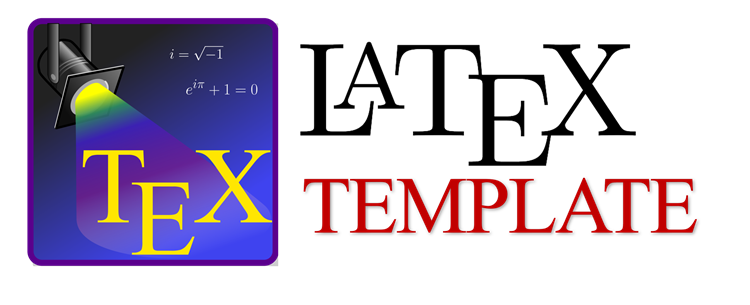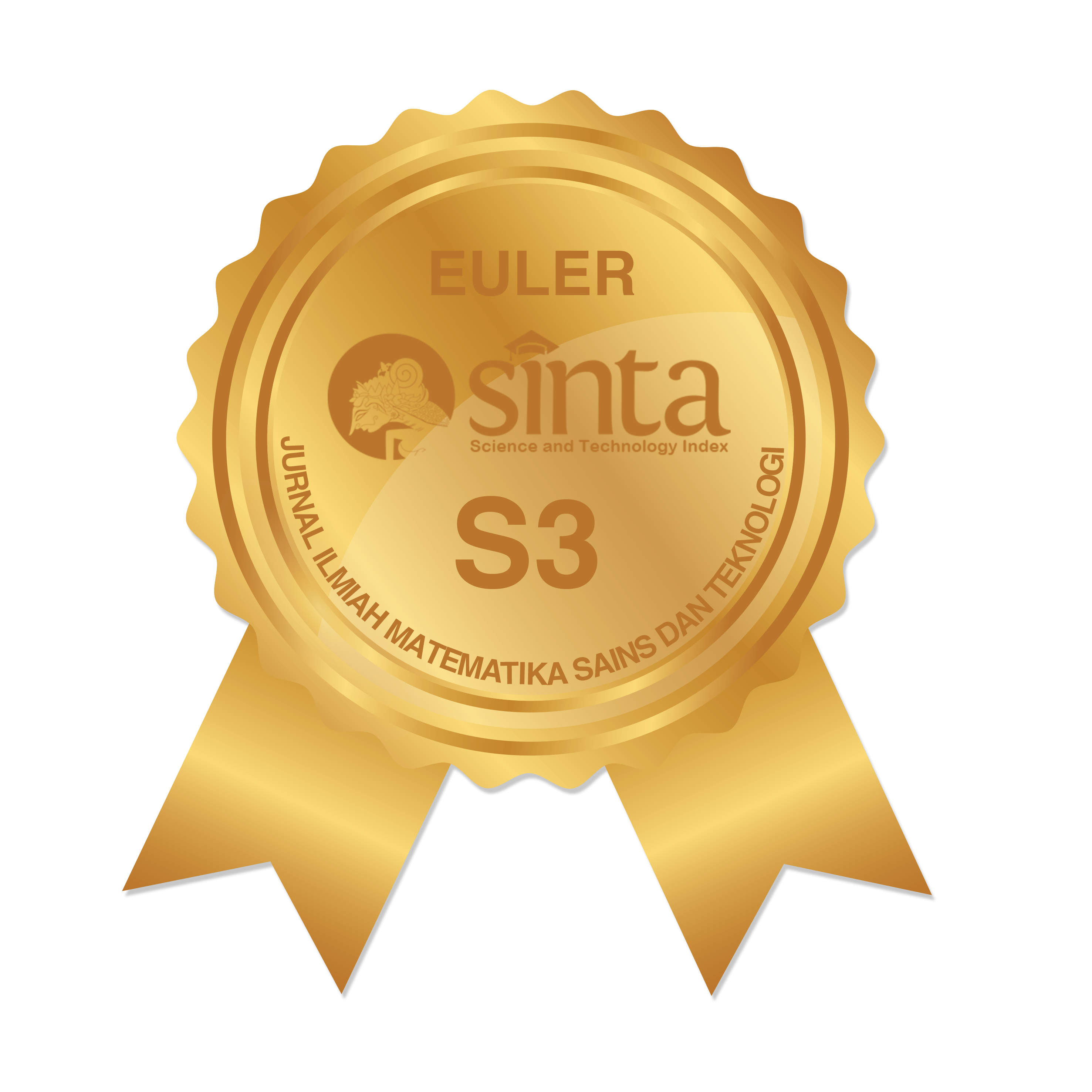Model Discovery Learning Pada Pembelajaran Matematika Sekolah Menengah Pertama: A Bibliometric Review
Abstract
Keywords
Full Text:
PDFReferences
J. S. Bruner, The act of discovery. Understanding Children, 1961.
D. F. Tanjung, E. Syahputra, and I. Irvan, "Problem Based Learning, Discovery Learning, and Open Ended Models: An experiment On Mathematical Problem Solving Ability" JTAM | J. Teor. dan Apl. Mat., vol. 4, no. 1, p. 9, 2020, doi: 10.31764/jtam.v4i1.1736.
K. H. Inde, M. B. U. Kaleka, and I. Ilyas, "the Effect of Discovery Learning Model on Learning Outcome of Grade-Vii Students of Smpn 5 Nangapanda" J. Sci. Educ. Res., vol. 4, no. 1, pp. 11-14, 2020, doi: 10.21831/jser.v4i1.34233.
M. Rahmayanti, "Application of the Discovery Learning Teaching Model in Mathematics Subjects" Community Med. Educ. J., vol. 2, no. 1, pp. 144-150, 2021, doi: 10.37275/cmej.v2i1.113.
J. Suratno, W. S. Tonra, and Ardiana, "The effect of guided discovery learning on students' mathematical communication skill" AIP Conf. Proc., vol. 2194, no. December, pp. 1-7, 2019, doi: 10.1063/1.5139851.
N. I. Pratiwi and S. Miriam, "Model of Discovery learning in Science Learning : Bibliometric Analysis of the Current State of the art and Perspectives" J. Math. Sci. Comput. Educ., vol. 2, pp. 114-127, 2022.
P. Ponidi, W. Waziana, M. Kristina, and M. Gumanti, "Model of Utilizing Discovery Learning to Improve Mathematical Learning Achievements" Attract. Innov. Educ. J., vol. 2, no. 1, p. 41, 2020, doi: 10.51278/aj.v2i1.27.
E. Syarif, S. Syamsunardi, and A. Saputro, "Implementation of Discovery Learning to Improve Scientific and Cognitive Attitude of Students" J. Educ. Sci. Technol., vol. 6, no. 1, pp. 23-31, 2020, doi: 10.26858/est.v6i1.11975.
I. H. Batubara, "Improving Student's Critical Thinking Ability Through Guided Discovery Learning Methods Assisted by Geogebra" Int. J. Educ. Vocat. Stud., vol. 1, no. 2, pp. 116-119, 2019, doi: 10.29103/ijevs.v1i2.1371.
Fahmi, I. Setiadi, D. Elmawati, and Sunardi, "Discovery Learning Method for Training Critical Thinking Skills of Students" Eur. J. Educ. Stud., vol. 6, no. 3, pp. 342-351, 2019, doi: 10.5281/zenodo.3345924.
E. Marta, F. B. Suryani, and E. A. Ismaya, "The Effectiveness of Think Talk Write and Discovery Learning on Learning Achievement in Elementary School" ANP J. Soc. Sci. Humanit., vol. 2, no. 1, pp. 1-6, 2022.
F. Linggile and C. S. Payu, "The Effect of Discovery Learning Based on Blended Learning on Student Learning Outcomes at SMA Negeri 1 Boliyohuto" J. Pendidik. Fis. dan Teknol., vol. 8, no. 2, 2022.
S. Sunarsih, M. Rahayuningsih, and N. Setiati, "The Development of Biodiversity Module Using Discovery Learning Based on Local Potential of Wonosobo" Jise (Journal Innov. Sci. Educ., vol. 9, no. 1, pp. 1-11, 2020, [Online]. Available: http://journal.unnes.ac.id/sju/index.php/jise
S. Dewi, Sukirman, and Santoso, "The Effectiveness of Discovery Learning Model on Students' Metacognitive" J. Phys. Conf. Ser., vol. 2309, no. 1, pp. 40-46, 2022.
S. Winita, S. Ramadhan, and Y. Asri, "The Development of Electronic Module Based on Discovery Learning in Writing Explanation Text" Adv. Soc. Sci. Educ. Humanit. Res., vol. 463, pp. 63-69, 2020, doi: 10.2991/assehr.k.200819.013.
R. D. Anggraini, A. Murni, and Sakur, "Differences in students' learning outcomes between discovery learning and conventional learning models" J. Phys. Conf. Ser., vol. 1088, pp. 0-5, 2018, doi: 10.1088/1742-6596/1088/1/012070.
I. Mayani, Suripah, and I. Muhammad, "Analysis of Students' Errors in Solving Statistical Problems: A Case of 8th Grade Students at SMPN 4 Siak Hulu, Indonesia" J. Pendidik. Mipa, vol. 23, no. 4, pp. 1826-1838, 2022, doi: 10.23960/jpmipa/v23i2.pp1827-1838.
W. Novantri, M. Maison, M. Muslim, and L. W. Aftriyati, "Discovery learning layak diterapkan pada pembelajaran matematika karena memiliki pengaruh yang lebih baik terhadap hasil belajar" Indones. J. Sci. Math. Educ., vol. 3, no. 2, pp. 144-152, 2020, doi: 10.24042/ijsme.v3i2.6615.
U. Atiyah, M. Miarsyah, and D. V. Sigit, "The Effect of Using E-Learning Based Guided Discovery Learning Model Based on Self-Efficacy Towards Student Learning Outcomes In Biology Class in Reproductive System Subject in High School" Int. J. Educ. Vocat. Stud., vol. 2, no. 9, pp. 789-796, 2020, doi: 10.29103/ijevs.v2i9.2732.
M. R. Ramdhani, B. Usodo, and S. Subanti, "Discovery Learning with Scientific Approach on Geometry" J. Phys. Conf. Ser., vol. 895, no. 1, 2017, doi: 10.1088/1742-6596/895/1/012033.
R. D. Honomichl and Z. Chen, "The role of guidance in children's discovery learning" Wiley Interdiscip. Rev. Cogn. Sci., vol. 3, no. 6, pp. 615-622, 2012, doi: 10.1002/wcs.1199.
F. Marchy, A. Murni, Kartini, and I. Muhammad, "The Effectiveness of Using Problem Based Learning (PBL) in Mathematics Problem Solving Ability for Junior High School Students" AlphaMath J. Math. Educ., vol. 8, no. 2, pp. 185-198, 2022, doi: 10.30595/alphamath.v8i2.15047.
I. Muhammad, Elmawati, C. M. Samosir, and F. Marchy, "Bibliometric Analysis: Research on Articulate Storylines in Mathematics Learning" EduMa Math. Educ. Learn. Teach., vol. 12, no. 1, pp. 77-87, 2023, doi: 10.24235/eduma.v12i1.12607.
N. Sanusi, F. A. Triansyah, I. Muhammad, and S. Susanti, "Analisis Bibliometrik: Penelitian Communication Skills Pada Pendidikan Tinggi" JIIP - J. Ilm. Ilmu Pendidik., vol. 6, no. 3, pp. 1694-1701, 2023, doi: 10.54371/jiip.v6i3.1763.
I. Muhammad, A. Mukhibin, A. do muhammad Naser, and D. Dasari, "Bibliometric Analysis: Research Trend of Interactive Learning Media in Mathematics Learning in Indonesia" Prism. Sains J. Pengkaj. Ilmu dan Pembelajaran Mat. dan IPA IKIP Mataram, vol. 11, no. 1, pp. 10-22, 2022, doi: 10.26737/jpmi.v8i1.4005.
R. Ramadhaniyati, K. Dwi, P. Siregar, I. Muhammad, and F. A. Triansyah, "Guide Discovery Learning ( GDL ) in Education : A Bibliometric Analysis" J. Educ., vol. 05, no. 04, pp. 11473-11484, 2023.
I. Muhammad, R. Darmayanti, and V. R. Arif, "Discovery Learning Research in Mathematics Learning : A" Delta-Phi J. Pendidik. Mat., vol. 1, no. 1, pp. 72-84, 2023.
C. A. Dewi et al., "Using Android-Based E-Module to Improve Students' Digital Literacy on Chemical Bonding" Int. J. Interact. Mob. Technol., vol. 16, no. 22, pp. 191-208, 2022, doi: 10.3991/ijim.v16i22.34151.
F. A. Triansyah, F. Yanti, A. Rabuandika, and I. Muhammad, "Augmented Reality Research in Middle Schools : Bibliometric Review" EDUKASIA J. Pendidik. dan Pembelajaran, vol. 4, no. 1, pp. 369-378, 2023.
A. G. Wicaksono, W. Sunarno, Ashadi, and B. Adi Prayitno, "Research Trends of Discovery Learning from 2015 to 2019: A Bibliometric Analysis" J. Phys. Conf. Ser., vol. 1842, no. 1, 2021, doi: 10.1088/1742-6596/1842/1/012026.
S. M. Soraya, Kurjono, and I. Muhammad, "Analisis Bibliometrik : Penelitian Literasi Digital dan Hasil Belajar pada Database Scopus ( 2009-2023 )" EDUKASIA J. Pendidik. dan Pembelajaran, vol. 4, no. 20, pp. 387-398, 2023.
I. Muhammad, D. F. Himmawan, S. Mardliyah, and D. Dasari, "Analisis Bibliometrik: Fokus Penelitian Critical Thinking dalam Pembelajaran Matematika (2017-2022)" JPMI (Jurnal Pembelajaran Mat. Inov., vol. 6, no. 1, pp. 78-84, 2023, doi: 10.22460/jpmi.v6i1.14759.
I. Muhammad, C. M. Samosir, Elmawati, and F. Marchy, "Bibliometric Analysis : Adobe Flash Cs6 Research in Mathematics Learning" J. Pendidik. Mat. Indones., vol. 8, no. 1, pp. 25-34, 2023, doi: 10.26737/jpmi.v8i1.4005.
N. C. Rayhan and D. Juandi, "STUDENTS LEARNING OBSTACLES RELATED TO MATHEMATICAL LITERACY PROBLEM : A SYSTEMATIC" J. Mat. DAN Pendidik. Mat., vol. 8, no. 2, pp. 457-472, 2023.
T. Septian and D. Juandi, "REFRACTIVE THINKING IN SOLVING MATHEMATICAL PROBLEMS IN INDONESIA :" J. Mat. DAN Pendidik. Mat., vol. 8, no. 2, pp. 405-422, 2023.
H. K. Rusyid, D. Juandi, P. Matematika, P. Alam, and U. P. Indonesia, "STUDENTS ' MATHEMATICS LEARNING DIFFICULTIES IN TERMS OF METACOGNITIVE ABILITY : A SYSTEMATIC" Pedagogy, vol. 8, no. 1, pp. 124-138, 2023.
S. Y. Phoong, S. L. Khek, and S. W. Phoong, "The Bibliometric Analysis on Finite Mixture Model" SAGE Open, vol. 12, no. 2, pp. 1-13, 2022, doi: /doi.org/10.1177/215824402211010.
I. Muhammad, F. Marchy, A. Do, and M. Naser, "Analisis Bibliometrik : Tren Penelitian Etnomatematika dalam Pembelajaran Matematika Di Indonesia ( 2017 - 2022 )" JIPM (Jurnal Ilm. Pendidik. Mat., vol. 11, no. 2, pp. 267-279, 2023, doi: 10.25273/jipm.v11i2.14085.
I. Muhammad, F. Marchy, H. K. Rusyid, and D. Dasari, "Analisis Bibliometrik : Penelitian Augmented Reality Dalam Pendidikan Matematika" JIPM (Jurnal Ilm. Pendidik. Mat., vol. 11, no. 1, pp. 141-155, 2022, doi: 10.25273/jipm.v11i1.13818.
A. Alviz-Meza, M. H. Vásquez-Coronado, J. G. Delgado-Caramutti, and D. J. Blanco-Victorio, "Bibliometric analysis of fourth industrial revolution applied to heritage studies based on web of science and scopus databases from 2016 to 2021" Herit. Sci., vol. 10, no. 1, 2022, doi: 10.1186/s40494-022-00821-3.
D. Moher, A. Liberati, J. Tetzlaff, and Douglas, "Preferred eeporting items for systematic reviews and meta-analyzes: The PRISMA statement" J. Chinese Integr. Med., vol. 7, no. 9, pp. 889-896, 2009, doi: https://doi.org/10.1136/bmj.b2535.
M. Hafiz, Darhim, and J. A. Dahlan, "Comparison of Mathematical Resilience among Students with Problem Based Learning and Guided Discovery Learning Model" J. Phys. Conf. Ser., vol. 895, no. 1, 2017, doi: 10.1088/1742-6596/895/1/012098.
Y. Herdiana, Wahyudin, and R. Sispiyati, "Effectiveness of discovery learning model on mathematical problem solving" in INTERNATIONAL CONFERENCE ON RESEARCH, IMPLEMENTATION, AND EDUCATION OF MATHEMATICS AND SCIENCE, 2017, p. 050028. doi: 10.1063/1.4995155.
V. Kartikaningtyas, T. A. Kusmayadi, and Riyadi, "Contextual Approach with Guided Discovery Learning and Brain Based Learning in Geometry Learning" J. Phys. Conf. Ser., vol. 895, p. 012024, Sep. 2017, doi: 10.1088/1742-6596/895/1/012024.
D. Tokada, T. Herman, and Suhendra, "Discovery Learning for Mathematical Literacy Ability" J. Phys. Conf. Ser., vol. 895, p. 012077, Sep. 2017, doi: 10.1088/1742-6596/895/1/012077.
A. N. Hasanah, N. Priatna, and K. Yulianti, "The ability of mathematical problem solving of junior high school students in situation based learning and discovery learning" J. Phys. Conf. Ser., vol. 1806, no. 1, p. 012070, Mar. 2021, doi: 10.1088/1742-6596/1806/1/012070.
R. Sahara, Mardiyana, and D. R. S. Saputro, "Discovery learning with SAVI approach in geometry learning" J. Phys. Conf. Ser., vol. 1013, p. 012125, May 2018, doi: 10.1088/1742-6596/1013/1/012125.
DOI: https://doi.org/10.34312/euler.v11i1.20042
Refbacks
- There are currently no refbacks.
Copyright (c) 2023 Ilham Muhammad, Dadang Juandi

This work is licensed under a Creative Commons Attribution-NonCommercial 4.0 International License.
Euler : Jurnal Ilmiah Matematika, Sains dan Teknologi has been indexed by:
EDITORIAL OFFICE OF EULER : JURNAL ILMIAH MATEMATIKA, SAINS, DAN TEKNOLOGI |
 | Department of Mathematics, Faculty of Mathematics and Natural Science, Universitas Negeri Gorontalo Jl. Prof. Dr. Ing. B. J. Habibie, Tilongkabila, Kabupaten Bone Bolango 96554, Gorontalo, Indonesia |
 | Email: [email protected] |
 | +6287743200854 (WhatsApp Only) |
 | Euler : Jurnal Ilmiah Matematika, Sains dan Teknologi (p-ISSN: 2087-9393 | e-ISSN:2776-3706) by Department of Mathematics Universitas Negeri Gorontalo is licensed under a Creative Commons Attribution-NonCommercial 4.0 International License. Powered by Public Knowledge Project OJS. |














